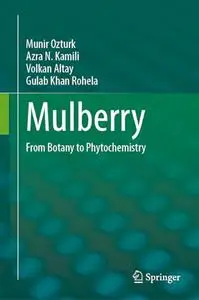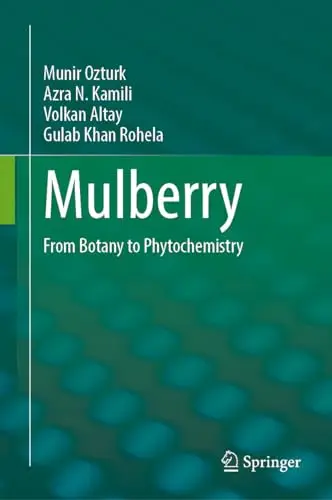Mulberry: From Botany to Phytochemistry by Munir Ozturk , Azra N. Kamili , Volkan Altay , Gulab Khan Rohela
English | PDF EPUB (True) | 2023 (2024 Edition) | 196 Pages | ISBN : 3031491165 | 32.6 MB
Mulberry (Morus spp.) is widely distributed tree taxon found almost in every continent across the globe. Habitat of this plant species is very much diversified, as it is found across all climatic zones ranging from tropical, sub-tropical, temperate, tundra, semi-arid to desert (arid) conditions. It flourishes on all types of landforms; mountains, valleys, plateaus, forests, grasslands, hills, plains and arid lands.
Successful utilization of mulberry leaf for silkworm rearing and production of quality cocoons has been studied at length. Now, mulberry is being recognized as a multipurpose plant by most of the countries across the globe. As mulberry is eco-friendly in nature, the propagation of mulberry needs to be done at large scale to address the ecological issues like conversion of arid lands to cultivable lands, eco-restoration of degraded lands, bioremediation of polluted land sites, conservation of water and soil, cleaning the air pollution in urban areas, utilization of mulberry in producing renewable energy in the form of biodiesel. Similarly, there is the need to produce the identified and highly commercially valued pharmaceutical compounds of mulberry under laboratory conditions through in vitro culture based secondary metabolite production through enhanced expression under the stress conditions or in presence of elicitors.
Lately protocols have been developed for genetic transformation of mulberry through agrobacterium mediated and particle bombardment mediated gene transfer techniques. Biotechnology based molecular breeding techniques could also be utilized in raising the improved lines through marker assisted selection, soma clonal variations, mutational breeding, somatic hybridization, genome editing and other genetic engineering approaches. Apart from sericulture; mulberry should also be utilized and exploited in other sectors across the globe for additional revenue generation, for livestock maintenance, for environmental safety and in promoting human health.
These diversified aspects of mulberry coupled with its economic importance in revenue generation through sericulture, animal husbandry and industrial products has prompted us to prepare this book. It will present a comprehensive account of mulberry plant under 9 chapter headings: introduction, botanical features, ecological features, ecophysiological aspects, interactions and development, molecular aspects, propagation and production, economic importance, and global perspectives as well as future approaches.
Thanks For Buying/Renewing Premium From My Blog Links To Support
Without You And Your Support We Can't Continue
Without You And Your Support We Can't Continue



